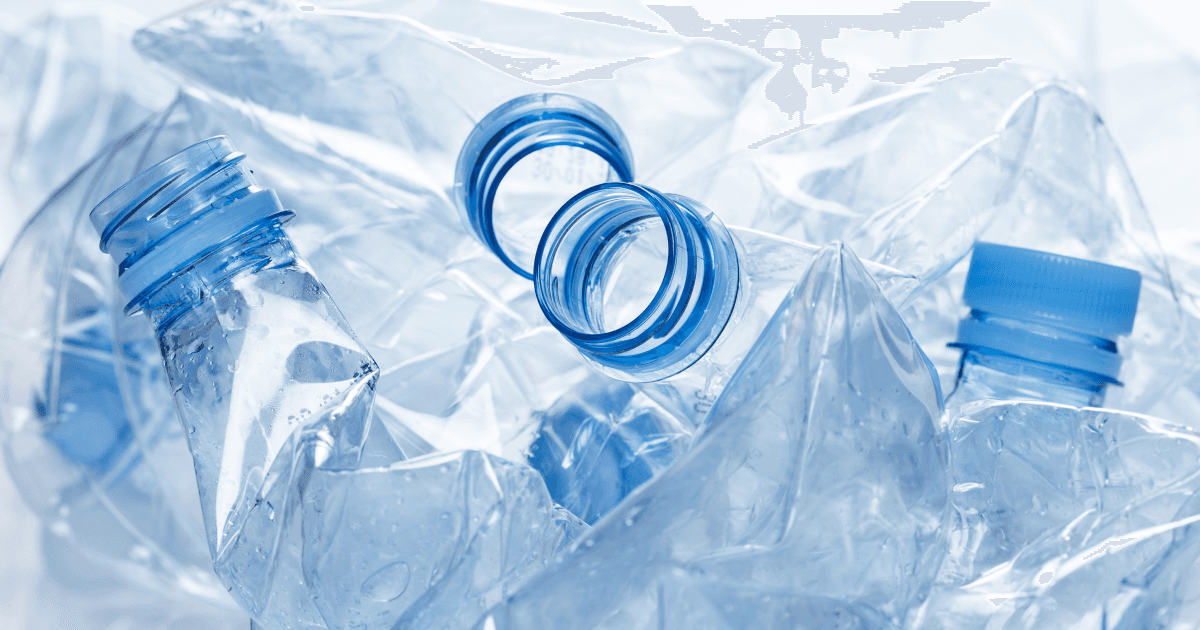Are phone makers doing enough to cut plastic waste? We explore how industry giants are tackling sustainability, and how far they still have to go.

Written by Yasmin Maagbe, Content and PR Executive | Environment and Consumer Electronics
Last updated on 17 December 2025

It’s no secret that the presence of plastic within our mobile phones has become a cause of concern. With popular brands like Apple, Samsung, Nokia (surprised?) and Fairphone recognising the urgency of the issue, are they working hard enough towards making changes in their products and production processes? Although questions surrounding becoming plastic free have noticeably increased, we want to know whether smartphone manufacturers are actually keeping up with the environmental impact it is having on the earth. In this blog, we will dive into what regulations have changed and our take on whether a plastic-free future for phones is drawing close.
In this article:
There Is Plastic Inside Your Phone
Find out which materials are inside your phone that may be problematic to the environment.
What Are Major Brands Doing About It?
Are your favourite mobile phone brands doing enough to make a difference?
We're Getting Stuck In When It Comes to Plastic-Free Packaging
Here's what Compare and Recycle are doing to reduce how much plastic is used in their packaging.
3 Things That Will Push For a Plastic-free Future
Learn how technological innovations, consumer awareness and regulatory measures are making a difference in working towards a plastic-free future.
Image: Compare and Recycle
Plastics, or polycarbonate, is one of the most commonly used materials in smartphones. Why? Because it provides a way for manufacturers to save on production costs. Basically, it allows them to mix different types of plastics together to create the internal components, as well as the outer casing. They can then apply protective coatings to give it a different look and feel and ultimately make their smartphones both affordable for them and visually appealing for us.
Relevant reading
It’s clear that mobile phone brands only seem to focus on the plastic used in their packaging and are taking a bit longer to eliminate it fully from internal components used in actual smartphones. What we continue to see in manufacturer environmental reports is a slow reduction of plastic in their brand new phone models and a lot of attention put on packaging designs.
Samsung
Back in 2022, Samsung announced that they will be repurposing discarded fishing nets and use them to build their Galaxy S series. Although they still incorporate plastic into their products, it was a good alternative to reducing any new plastics needed for their phones. It highlights that Samsung is putting in effort to eliminate single-use plastic and begin to incorporate the use of other eco-conscious materials.
Samsung aims to incorporate recycled resin into 100% of the plastics in its products by 2050.
The Galaxy S23 uses recycled ocean waste and, according to Samsung, is their most sustainable phone to date, emitting a total of 70.557kg of CO2-e. Both the S22 and S23 models are Carbon Trust Certified, meaning their carbon footprints have been measured and verified to the best standards, with the commitment of reducing emissions year-on-year.
Nokia
Nokia released their X30 5G phone with sustainability and longevity in mind, with the inclusion of a 3 year warranty which is actually quite rare for a mid-range Android phone. The Nokia X30 5G phone was built with up to 60% of recycled plastic and recycled aluminium and according to Nokia, is their most sustainable phone yet. Not only have Nokia reduced the size of their packaging since the Nokia X30 5G predecessor, but they also launched an innovative subscription service called Circular, which, similar to the concept of renting a phone, encourages their customers to hold onto their phones for longer with necessary replacements taken care of and piece of mind when it comes to recycling your used Nokia.
Image: Compare and Recycle
Fairphone It’s fair to say that Fairphone is the most environmentally friendly mobile phone company out there right now. With a Blue Angel rating, they offer budget phones with the core purpose of being sustainable. The Fairphone 4 is the world’s first electronic waste neutral smartphone and contains post consumer recycled plastics. For example the back cover is made 100% from recycled plastics.
Relevant reading:
At Compare and Recycle, we pride ourselves on making sure we not only help our customers find the best deal when buying a refurbished phone or recycling old tech, but also do our bit in helping the environment too. Our trade-in packs are 100% plastic free and fully recyclable which allows us to have peace of mind and continue one of our missions in protecting the environment.
Image: Compare and Recycle
If big brands and consumers do their part in becoming serious about what is produced and consumed, then we may actually have a chance in making a difference when it comes to being plastic-free. There are 3 main points that can act as catalysts for change when it comes to the mobile phone industry becoming plastic free:
Consumer Demand and Awareness
We may not realise it, but consumers actually hold significant power in shaping the direction of the mobile phone industry because we possess the ultimate weapon… purchasing power! It’s clear that consumers today are actively seeking more sustainable options, from plastic-free phone cases on the rise to clothing brands offering take-back schemes to lower the rates of wastage in landfills. So, as people are becoming more aware of the growing concerns surrounding the environment and what it means to be environmentally conscious, big brands are feeling the pressure and prioritise sustainability. We also need to be more aware of big phone manufacturers creating a constant demand for new devices. An example being Apple releasing a new iPhone every year; for consumers it becomes ever more tempting to jump on the bandwagon of the latest phone, which is aiding the rapidly climbing e-waste figures. By choosing eco-friendly products and essentially demanding sustainable practices from these companies, we can push manufacturers to do the same and take environmental responsibility. So, we should all try to exercise our purchasing power and make it a focus to influence their decisions on material, production processes and sustainability efforts.
Technological Innovation
We know that plastic waste is becoming a serious problem, so much so that there was an estimated 347 Mt of unrecycled e-waste on Earth in 2022. The majority of the materials in our electronics are potentially toxic, which is why innovative strategies are coming about in order to make electronics biodegradable. Materials such as plastics are incredibly hard to break down, making to one of the main issues when it comes to unrecycled e-waste.
We want to see big tech brands make it their mission to ensure tech trash is a thing of the past and creative technological innovations are an incredible way to do so. To us it seems like the obvious route to trying to lower the use of plastic in our mobile phones, especially seeing as consumers today are extremely open to sustainably creative products and innovations. So why is hardly anything being done?
Now, if there were any company who could really kickstart this trend, it would be Apple in our opinion because they have always had such a huge influence on consumers and the tech world. Apple is developing different strategies to find plastic-free alternatives within their mobile phones and incorporating recycled materials, but it is so easy to be fooled by their loose statements and finding truth in the small print has been challenging…
It’s a big disappointment, especially as we can see firsthand just how quickly technologies continue to evolve. This is because we know that they have huge potential and deep pockets to completely revolutionise the mobile phone industry and essentially lead the way to a plastic free world. If all mobile phone brands really started to delve into the way they manufacture their products, then maybe this blog would have a very different stance.
Regulatory Measures
It should be a goal for governmental regulations to ensure that sustainable practices become an industry standard. We have seen that many countries have banned the use of single-use plastics including cutlery, straws and plates, and recently we have seen EU law knuckle down on the common charger directive:
Relevant reading:
Hopefully, these changes in EU regulations will push mobile phone brands to rethink their use of plastic in accessories and adopt more sustainable approaches. As more laws are enforced and bigger brands comply, there will be even more room to introduce different measures that will gradually bring down the rates of plastic use in mobile phones.
The issue of plastic in mobile phones and electronic devices in general, has definitely generated attention over the last decade. But our concern is whether it has prompted enough action from the mobile phone industry giants that dominate the market right now. The incorporation of recycled materials and the reduction of plastic within their mobile phones and packaging is great, but in our opinion, isn’t it time to push the boundaries and actually come up with a new innovative solution? All environmental strategies include these main practices, so what we want to see is something new that will truly rock the boat. For now, all we can do is hold on to our consumer power and continue to influence the industry’s trajectory by supporting companies committed to reducing plastic.

The iPhone used to define innovation. Now every new model feels the same. Is Apple’s story running out of pages?

See which Apple, Samsung and Google phones hold their value best over the first and second year on the market.
With Pixels becoming a decent contender for your upgrade choice, we’ve crunched the numbers to reveal depreciation patterns of Google Pixel phones.